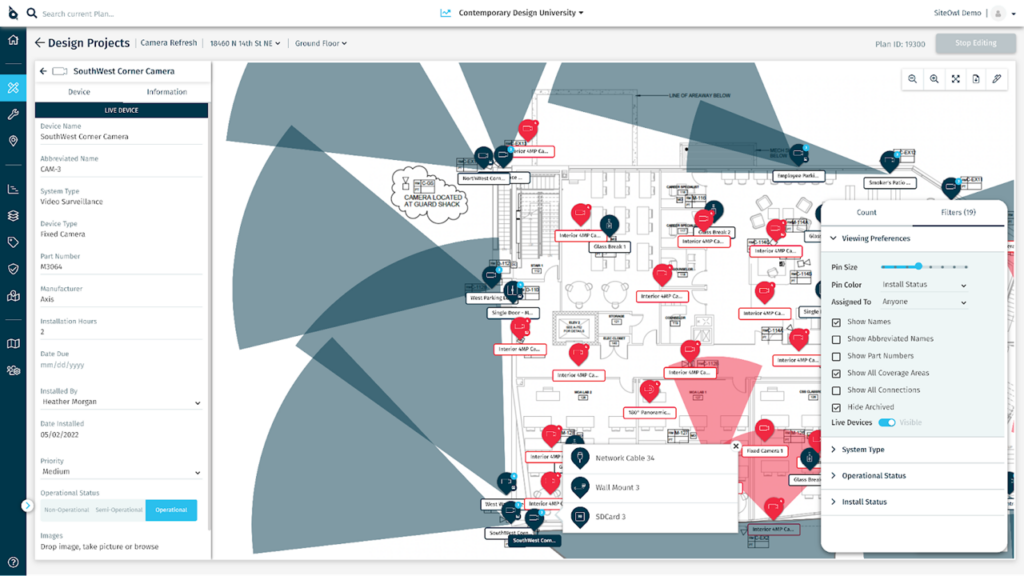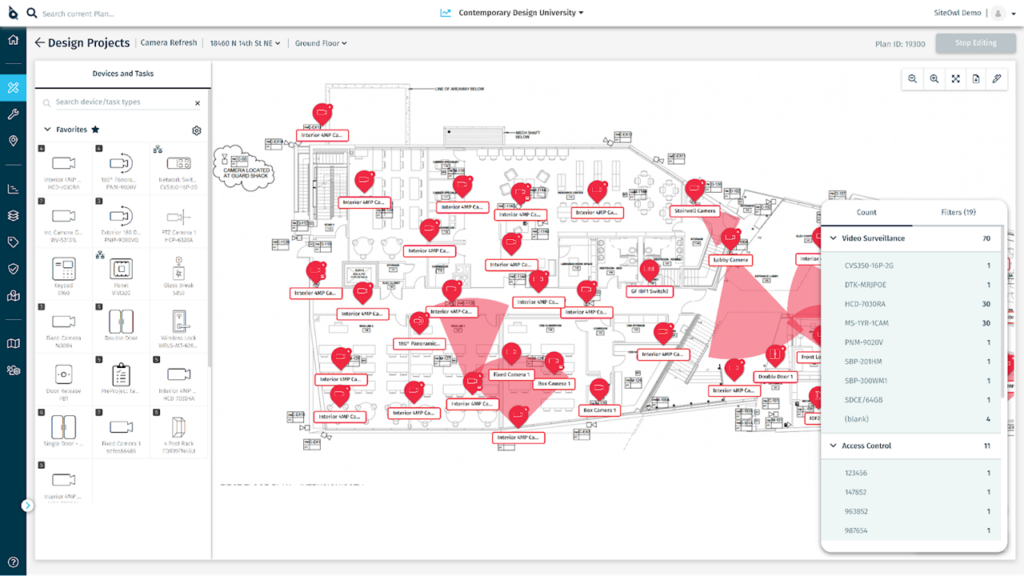If you’re in a security leadership role, you know firsthand that physical security projects are inherently difficult. They require a delicate balance between implementing effective measures to prevent security breaches and minimizing disruption to day-to-day operations.
In a recent survey, only 43% of companies reported completing their projects within the established budget and on time. In the enterprise physical security world, nailing your projects on time and within budget is essential to keep your assets and employees safe. So, let’s dive into five proven ways to make sure your security projects are delivered like a pro, with relevant stats to back them up where we can.
Security projects often suffer from poor communication, lack of coordination, and failure to meet deadlines. This is primarily due to the lack of a centralized project management system for all stakeholders to collaborate and create a proactive project management environment.
In this article, we will discuss five of the most effective ways to bring your next physical security project in on time and under budget.
1. Ditch the paper, pen and static CAD drawings
Embracing security design software
Ditch legacy tools that slow you down and embrace the age of cloud-based security management. SiteOwl allows you to collaborate in real-time while considering your current infrastructure, and you’ll streamline processes and reduce costly mistakes.
With SiteOwl you can:

- Collaborate with security consultants, integrators and internal stakeholders in real-time.
- Build designs that consider what you already have so you’re optimizing costs as effectiveness. SiteOwl allows you to see your current infrastructure while creating new designs.
- Easily approve designs over a video call rather than weeks of back and forth.
- Standardize your design process across all locations and projects. For example, you can create “favorites” to standardize your door packages.
2. Scope your project accurately to avoid scope creep

Engage all stakeholders early in the process to identify objectives, requirements, and potential challenges. Do you need to involve IT or facilities to understand what their needs and objectives are? What potential roadblocks are they seeing that you aren’t?
Perform a thorough site assessment to understand the existing security infrastructure and identify areas of improvement. Things you should consider are:
- What is your current warranty status on your devices?
- How old is your infrastructure? How many of your devices are end-of-life?
- Are there devices that fail more frequently than others and do you have a plan for replacing them?
A physical security lifecycle management platform like SiteOwl provides all this information in a visual dashboard, making it easy to plan your project effectively.

We recently published an article on how teams can conduct a physical security lifecycle assessment using SiteOwl, along with a simple downloadable tool you can use.
Leverage data from similar projects to make more accurate estimations on time, resources, and budget. With SiteOwl, you can go back to look at past projects and how much they cost for you to make better decisions.

4. Keep an eye on project progress
SiteOwl helps you stay focused and agile

- Providing real-time updates on project milestones and completion status. For instance, SiteOwl provides percentage completion reports that are accurate to the minute.

- Streamlining communication between all stakeholders. With SiteOwl, teams in the field can “flag” issues immediately for speedy resolution.

- Facilitating vendor performance tracking, ensuring they meet their commitments. With SiteOwl, security teams can ask vendors to submit photos for installations to verify quality of installation and work completion.
3. Start with a solid kickoff meeting
A well-organized kickoff meeting sets the tone for the entire project and helps align everyone’s expectations. Here’s how to make the most of it:
- Invite all key stakeholders, including internal team members, vendors, and any other relevant parties.
- Clearly outline the project objectives, scope, timeline, and budget.
- Assign roles and responsibilities to each team member.
- Establish communication protocols and reporting procedures.
Five key questions the kick-off meeting should answer
- Are all team members aware of the project objectives? Making sure that they are will help avoid miscommunication and ensure everyone is working toward the same goal.
- Do all team members understand their roles and responsibilities? They’ll also want all the knowledge and information necessary to fulfill their assigned roles and responsibilities. This includes access to any necessary tools, equipment, or resources required to complete their tasks effectively.
- Is everyone clear on how to communicate with each other?. You’ll want to establish methods for communication between team members and leadership, including regular check-ins, status updates, and designated points of contact for questions or concerns.
- Are project timelines and completion dates clear? Realistic and attainable deadlines can help teams manage resources accordingly and make sure tasks are completed on time.
- Have you addressed all questions from all team members? This includes following up on any outstanding questions from previous meetings and addressing any new concerns that have arisen.
5. Implement a robust change management process
Change is an inevitable part of any major project. How you manage and adapt to these changes can significantly impact your project’s success. A robust change management process can keep your project on track, even when unexpected situations arise. Here’s how to establish an effective change management process:
- Set up a clear procedure for submitting, reviewing, and approving change requests.
- Communicate the potential impact of changes on the project’s timeline, budget, and scope to all stakeholders.
- Continuously monitor the project’s progress and make data-driven decisions when dealing with change requests.
- Be prepared to reallocate resources and adjust timelines as needed to accommodate changes without jeopardizing the project’s overall success.
SiteOwl streamlines communication to keep stakeholders engaged
Security projects are challenging enough, so you don’t want to add more stress to the process by working with spreadsheets and other legacy tools and systems. With SiteOwl, you can adopt a proactive approach to project management and communication by:
- Establishing site-specific requirements for vendor performance.
- Viewing project status at a glance and communicating with team members in real-time.
- Obtaining consolidated system reporting to make data-driven decisions.
Bring your next security project in on time and under budget with SiteOwl
In conclusion, bringing your next physical security project in on time and under budget requires careful planning, effective communication, and team accountability. By starting with the end in mind and eliminating communication gaps, you can ensure that your project stays on track and within budget.







